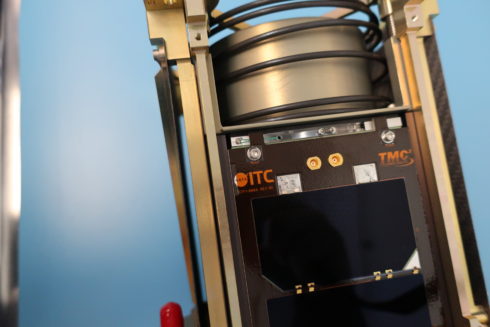FAIRMONT, W.Va. — The first ever spacecraft with a West Virginia origin story is in space this very minute, preparing to pass over its home Wednesday afternoon.
STF-1, a satellite built by researchers and engineers in Fairmont, will begin conducting testing in conjunction with West Virginia University by week’s end.
“We’re talking about a piece of equipment that is about the size of a loaf of bread,” said Scott Zemerick, project leader, Wednesday morning on MetroNews “Talkline” with Hoppy Kercheval. “In it has a computer, solar panels, solar cells, a radio for communicating, and it has our experiments on board.”
The Mountain State’s first ever identified flying object launched from Auckland, New Zealand at 1:33 a.m. EST last Sunday, Dec. 16. The STF-1 team made contact with the satellite successfully three days later.

“We are just now finishing up the ‘making sure everything is cool phase,’ and we are going to start the testing and experimentation this week,” Zemerick said.
The launch of STF-1 is a story more than four years in the making, beginning with Zemerick’s team coming up with a project, pitching it to NASA, and earning approval and funding to make it a reality.
“We decided that we would like to showcase our work and actually build our own spacecraft and satellite, get it launched, and have it orbit the Earth and have it do experiments — cutting edge science experiments from WVU,” he said.
The entire project was developed and built in West Virginia before the final product made its first trip away from home — being hand delivered to colleagues in Huntington Beach, California.
“We used very specialized hardware, and the software we write is very resilient,” Zemerick said.
Zemerick is thrilled with the entire process — now focused on what comes next in the life of STF-1.
“There’s no fixing the software now, there’s no fixing the hardware,” he said. “If something breaks now, you kind of had to have planned for it way ahead of time.”

STF stands for “simulation to flight,” work that showcases what the STF-1 team does for the NASA Independent Verification and Validation (IV&V) facility in Fairmont.
“We are very proud to see it launch,” Zemerick said. “And very, very excited when we finally got communications from it just a week ago.”
One can imagine it might be rare for a professional to be so giddy over a successful project, but few jobs carry such a razor thin margin of error.
“We put a lot of time and effort into this,” Zemercik said. “There’s a lot of things that can just break, but nothing broke. We did an excellent job engineering this, and we are now getting data down from space — which is very awesome.”
STF-1 is expected to be pass over the state around 4:30 p.m. EST Wednesday.

